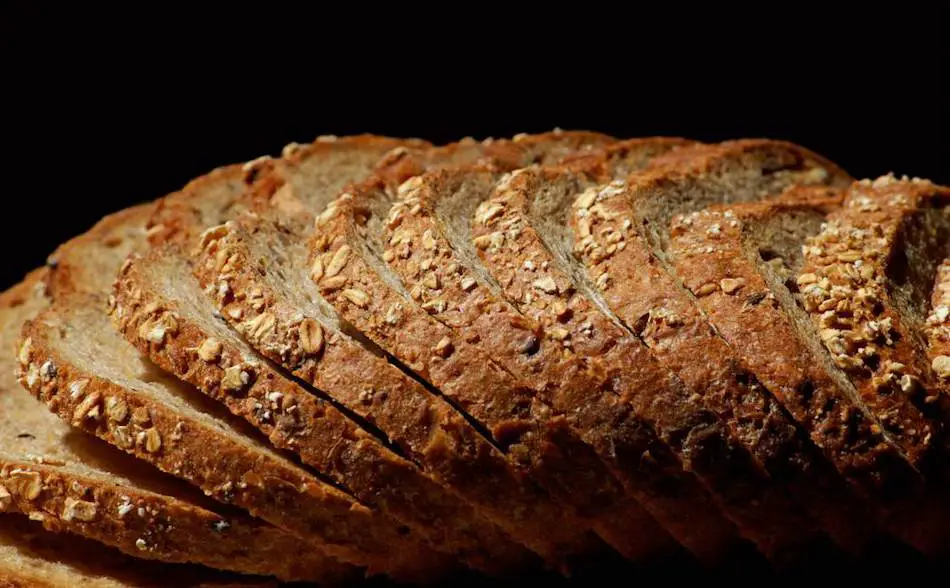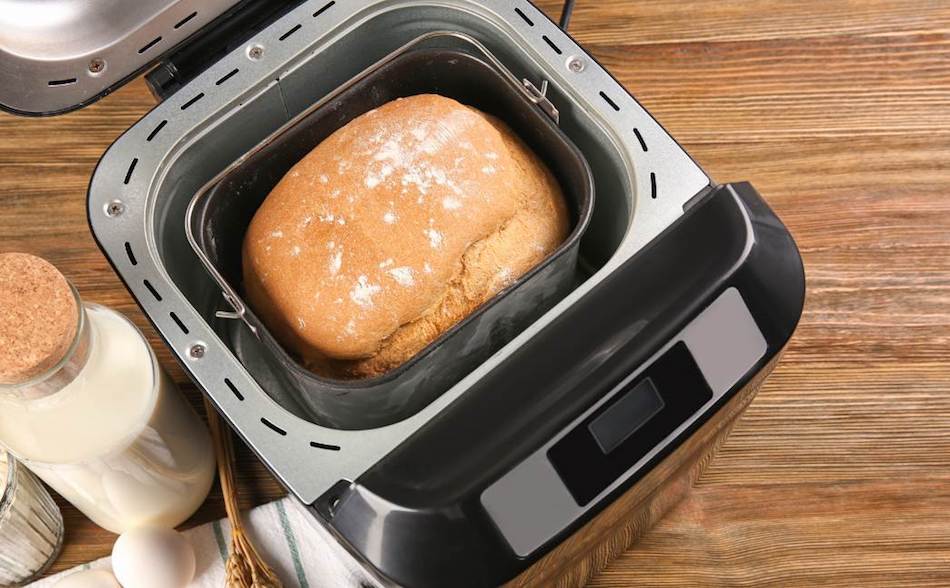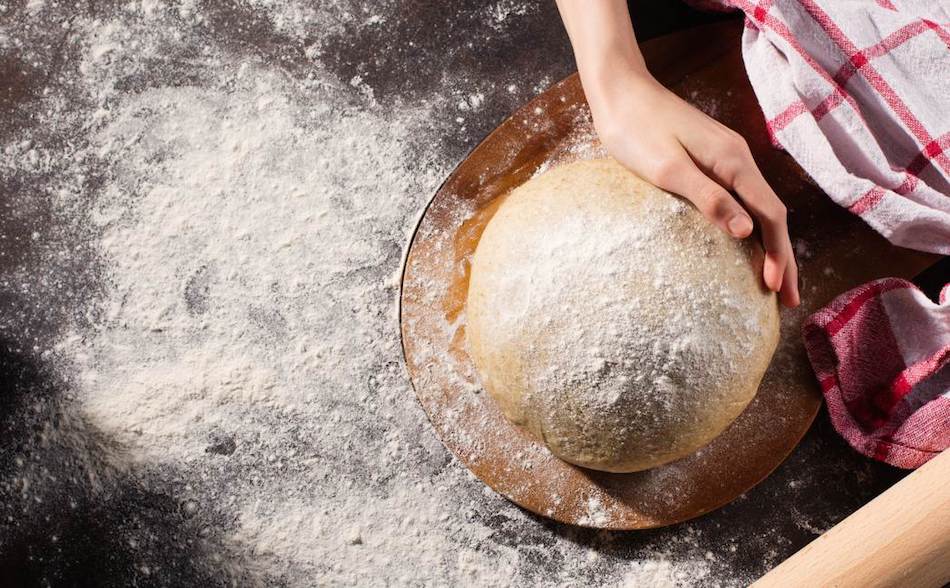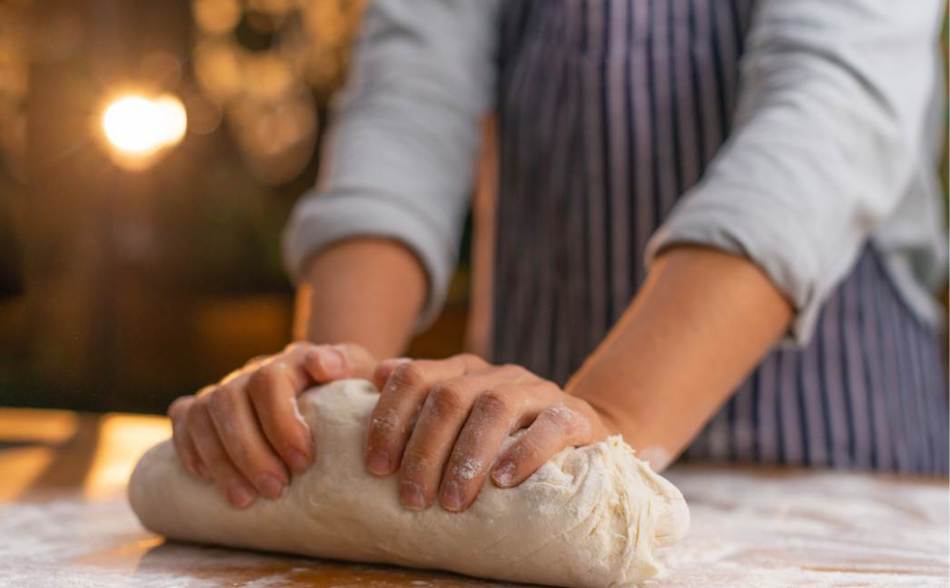One common issue that home bakers encounter is when their whole wheat bread turns out with a soggy bottom. This can be frustrating and can make the bread less enjoyable to eat. In this article, we will explore the causes of soggy bottom whole wheat bread and provide solutions for achieving a perfectly crispy crust every time. Whether you’re a beginner or an experienced baker, this troubleshooting guide will help you achieve the perfect loaf of whole wheat bread.
Soggy bottom bread is caused by a combination of factors such as too much moisture in the dough, insufficient oven temperature, and poor baking techniques. Moist dough can lead to a soggy bottom because the steam produced during baking is trapped in the loaf, preventing the crust from forming and hardening. Insufficient oven temperature can also be a problem because it can prevent the crust from forming and hardening, leaving the bottom of the loaf soggy. Poor baking techniques, such as placing the loaf in a cold oven or using a pan that is too small, can also lead to a soggy bottom. To prevent soggy bottom bread, it’s important to ensure that the dough is not too moist, to preheat the oven to the correct temperature, and to use a baking technique that promotes crust formation.

So what causes too much moisture at the bottom of the loaf?
A soggy loaf bottom is one of the worst things that can happen to freshly baked bread. But why does it happen? Well, it’s all about the moisture. Let me explain. Bread is made up of flour, water, yeast and salt. When it’s baking, the yeast ferments and produces carbon dioxide. This causes the bread to rise and form the air pockets we all love. But if there’s too much moisture at the bottom of the loaf, it’ll seep into the bread and make it heavy and soggy. It’s like a sponge, it’ll soak up all the moisture it can get. And that’s why we got to be careful when we’re baking bread, especially whole wheat breads. It’s a delicate balance of ingredients and timing, but once you got it right, you’ll have a bread that’s a crusty on the outside, and light and airy on the inside. And that’s the way it should be.
There are several factors that can cause too much moisture at the bottom of a loaf of bread. Some of the main causes include:
- Over-proofing: when the dough is left to rise for too long, it can become over-proofed. This means that the yeast has had too much time to ferment and produce gases, which can cause the dough to collapse and result in a soggy bottom.
- Under-baking: if the bread is not baked for long enough, the dough inside can remain raw and moist, resulting in a soggy bottom.
- Insufficient ventilation: if the bread is not given enough room to breathe during baking, the moisture inside the loaf can become trapped, resulting in a soggy bottom.
- High humidity: if the humidity is too high, it can prevent the bread from forming a crust and can cause the bread to steam instead of bake, resulting in a soggy bottom.
- Using too much water in the recipe: if too much water is added to the dough, it can make the bread too moist, resulting in a soggy bottom.
- Using a pan with a poor heat conductivity or not preheating the pan: Some pans have poor heat conductivity which can cause uneven baking, resulting in a soggy bottom.
To prevent this, you can try to reduce the humidity inside the oven by opening the door slightly during the last few minutes of baking, make sure to let the dough rise for the appropriate amount of time.
How to get a crispy Botton on whole wheat
There are a few key steps you can take to achieve a crispy bottom on whole wheat bread:
- Preheat the oven and baking stone or tray: Preheating the oven and baking stone or tray will help to create a hot and even cooking environment, which is essential for a crispy crust.
- Use a baking stone or tray: Baking the bread on a preheated stone or tray will help to transfer heat to the bottom of the loaf, resulting in a crispier crust.
- Use a peel: A peel is a flat paddle that is used to transfer the bread to the oven. It can be dusted with cornmeal or flour, which will create a barrier between the bread and the baking surface, allowing steam to escape and preventing the bread from sticking.
- Score the bread: Scoring the bread, or making shallow cuts on the top of the loaf, will allow steam to escape and prevent the bread from puffing up too much, which can lead to a soggy bottom.
- Add a pan of water: Placing a pan of water at the bottom of the oven will create steam, which will help to form a crust and prevent the bread from drying out.
- Control the humidity: The humidity inside your oven also plays a role in the final texture of the bread. If your bread is coming out with a soggy bottom, try to reduce the humidity inside the oven by opening the door slightly during the last few minutes of baking.
Causes and Solutions
| Causes of Soggy Bottom | Solutions |
|---|---|
| Using too much flour | Use the right ratio of ingredients and handle the dough gently during the shaping and rising process |
| Overworking the dough | Use a stand mixer with a dough hook or let the dough rise for longer periods at lower temperatures |
| Baking at too low a temperature | Bake at the appropriate temperature and for the appropriate amount of time |
| Too much humidity in the oven | Try to reduce the humidity inside the oven by opening the door slightly during the last few minutes of baking |
| Lack of structure in the dough | Use a stand mixer with a dough hook or let the dough rise for longer periods at lower temperatures |
| too much moisture at the bottom of the loaf | Try using a baking stone or tray and dusting it with cornmeal or flour, which will create a barrier between the bread and the baking surface, allowing steam to escape and preventing the bread from sticking |
| Not scoring the bread | Score the bread, or making shallow cuts on the top of the loaf, will allow steam to escape and prevent the bread from puffing up too much, which can lead to a soggy bottom |
1. Bread machines can cause soggy bottoms
Bread machines can make bread that is more soggy than bread made using other methods, but this is not always the case. The reason for this is that bread machines often have a shorter baking cycle than traditional methods and can trap more moisture in the bread. Also, the lack of control over the baking process can also contribute to the bread being more soggy.
However, with proper adjustments in ingredients, temperature and timing, bread machines can produce breads with a good texture and crust. Some bread machine models also have a “bake only” function, which allows you to finish the baking process outside of the machine, providing a better crust.

2. Don’t use too much flour
Using too much flour in a whole wheat bread recipe can make the bread heavy and dense, resulting in a soggy bottom. When too much flour is used, the dough can become too dry and tight, which can prevent the yeast from fermenting properly and the bread from rising properly. This can also lead to a lack of air pockets in the bread, resulting in a denser texture.
To prevent this, it’s important to use the right ratio of ingredients and to handle the dough gently during the shaping and rising process. This means measuring the ingredients accurately and not adding too much flour when kneading the dough. It’s also important to let the dough rise for the appropriate amount of time and at the right temperature.
Another solution is to use a stand mixer with a dough hook to knead the dough, which can help to incorporate the ingredients without overworking the dough. And also, avoid adding extra flour to the dough if it seems too sticky, instead, use a dough scraper to handle it.

3. Don’t overwork the dough
When you knead dough, you’re developing the gluten, that’s the protein that gives bread its structure. But if you knead it too much, you’ll develop too much gluten and that’s when things go wrong. The dough becomes too tight and doesn’t rise properly, resulting in a dense and heavy bread. And that’s when you got a soggy bottom.
It’s like a boxer, you gotta train it, but you don’t wanna beat it up too much. You gotta let it rest, let it rise, and let it do its thing. That’s why I prefer to use a stand mixer with a dough hook, or if you’re doing it by hand, don’t knead it too much and let it rest and rise for the appropriate amount of time. And it’ll come out perfect, light and airy on the inside, crusty on the outside, just the way it should be.
And remember, when it comes to bread, less is often more. Don’t overwork it, and you’ll have a bread that’s worthy of a Michelin star.
4. Don’t bake at low temperatures
Baking bread at too low a temperature can make the bread soggy because it doesn’t allow the bread to cook through properly. When the oven temperature is too low, the bread doesn’t get hot enough to form a crust, which helps to seal in the moisture and keep the bread from getting soggy. Also, when the bread doesn’t cook through properly, the dough inside can still be raw and moist.
When the bread is not cooked at the right temperature, the crust will not develop and the bread will not have the structure it needs to hold its shape, resulting in a bread that is dense and heavy with a soggy bottom.
To prevent this, it’s important to bake bread at the appropriate temperature for the appropriate amount of time. This will vary depending on the recipe and the type of bread you’re making, so it’s important to follow the recipe and make sure that the bread is cooked through. Most breads are baked at around 425°F (220°C) for 25-30 minutes, but check the recipe you’re using, it may vary.
It’s also important to preheat the oven before baking, this will ensure that the oven is at the right temperature from the start. And also, if you’re baking multiple loaves, make sure to place them in the oven with enough space between them to allow for proper heat circulation.
5. Monitor the humidity
Too much humidity in the oven can make bread soggy because it prevents the bread from forming a crust and can cause the bread to steam instead of bake. When there is too much humidity in the oven, the moisture from the dough cannot evaporate properly, which can make the bread heavy and dense. It can also cause the bread to lose its shape and collapse.
When the bread is steamed instead of baked, the crust doesn’t develop as it should and the bread remains moist and doughy, resulting in a soggy bottom.
To prevent this, one solution is to try to reduce the humidity inside the oven by opening the door slightly during the last few minutes of baking. This will allow some of the steam to escape and prevent the bread from getting soggy.
Another solution is to place a baking stone or tray in the oven and dusting it with cornmeal or flour, which will create a barrier between the bread and the baking surface, allowing steam to escape and preventing the bread from sticking. And also, if you’re baking multiple loaves, make sure to place them in the oven with enough space between them to allow for proper heat circulation.
You can also use a Dutch Oven, it creates a nice steamy environment inside the pot that helps the bread rise and develop a crusty crust.
So too much humidity in the oven can make bread soggy because it prevents the bread from forming a crust and can cause the bread to steam instead of bake. To prevent this, you can try to reduce the humidity inside the oven by opening the door slightly during the last few minutes of baking, using a baking stone or tray dusted with cornmeal or flour, and using a Dutch Oven.
6. Make sure the dough has structure
Lack of structure in the dough can make bread soggy because it doesn’t provide the bread with the support it needs to hold its shape and rise properly. When the dough lacks structure, it can be too soft and wet, which can cause the bread to spread out and lose its shape during baking. This can also prevent the bread from forming a crust, which helps to seal in the moisture and keep the bread from getting soggy.
One of the main causes of lack of structure in dough is the absence of gluten, which is a protein that gives bread its structure. Gluten is formed when wheat flour is mixed with water and kneaded, and it’s what makes the dough stretchy and elastic. If the dough lacks gluten, it will be too soft and wet, and will not rise properly, resulting in a dense and heavy bread with a soggy bottom.
To prevent this, it’s important to use the right type of flour and to handle the dough gently during the shaping and rising process. This means measuring the ingredients accurately and not adding too much flour when kneading the dough. It’s also important to let the dough rise for the appropriate amount of time and at the right temperature.
Another solution is to use a stand mixer with a dough hook to knead the dough, which can help to incorporate the ingredients and develop gluten without overworking the dough.

7. Make sure you score the bread
Not scoring bread can cause bread to become soggy because it prevents the bread from releasing steam during baking. Scoring, also known as slashing, is the process of cutting the surface of the dough with a sharp knife or razor blade before baking. This allows the bread to release steam as it bakes and prevents the crust from becoming too thick and preventing the bread from rising properly.
When bread is not scored, the steam is trapped inside the loaf, causing the bread to expand in an uncontrolled manner, which can cause the bread to collapse and become soggy. Also, not scoring the bread can also cause the bread to burst open at random places, creating an uneven crust, and a soggy bottom.
To prevent this, it’s important to score the bread before baking to release the steam and help the bread rise properly. The score should be deep enough to break through the surface of the dough, but not so deep that it cuts through the entire loaf. The key is to make sure that the cuts are deep enough to allow the steam to escape, but not so deep that it causes the bread to collapse.
How to bake whole wheat bread with a crispy crust:
Ingredients:
- 500 grams whole wheat flour
- 7 grams of salt
- 7 grams of instant yeast
- 350 milliliters of warm water
Steps:
- In a large mixing bowl, combine the whole wheat flour, salt, and instant yeast.
- Slowly add the warm water to the flour mixture and mix until a dough forms.
- Knead the dough for 10-15 minutes, or until it becomes elastic and smooth.
- Cover the dough and let it rise for 1-2 hours, or until it has doubled in size.
- Preheat the oven to 425F (220C).
- Shape the dough into a round loaf and place it on a baking sheet lined with parchment paper.
- Using a sharp knife, score the top of the loaf with a few deep cuts.
- Place the loaf in the oven and bake for 30-40 minutes, or until the crust is golden brown and the bread sounds hollow when tapped on the bottom.
- Remove the bread from the oven and let it cool on a wire rack.
| Step | Description |
|---|---|
| 1 | Combine the whole wheat flour, salt, and instant yeast in a large mixing bowl. |
| 2 | Slowly add the warm water to the flour mixture and mix until a dough forms. |
| 3 | Knead the dough for 10-15 minutes, or until it becomes elastic and smooth. |
| 4 | Cover the dough and let it rise for 1-2 hours, or until it has doubled in size. |
| 5 | Preheat the oven to 425F (220C). |
| 6 | Shape the dough into a round loaf and place it on a baking sheet lined with parchment paper. |
| 7 | Using a sharp knife, score the top of the loaf with a few deep cuts. |
| 8 | Place the loaf in the oven and bake for 30-40 minutes, or until the crust is golden brown and the bread sounds hollow when tapped on the bottom. |
| 9 | Remove the bread from the oven and let it cool on a wire rack. |
Final thoughts
- Soggy bottom bread is caused by a variety of factors, including over-proofing, under-baking, insufficient ventilation, high humidity, using too much water in the recipe, using a pan with a poor heat conductivity and not scoring the bread.
- To prevent soggy bottom bread, it is important to reduce humidity inside the oven, let the dough rise for the appropriate amount of time and score the bread before baking to release steam and help the bread rise properly.
- A step-by-step guide on how to bake whole wheat bread with a crispy crust is provided, including ingredients and detailed instructions.
- To achieve a crispy crust on whole wheat bread, it is important to use good quality flour, handle the dough gently during the shaping and rising process, and score the bread before baking to release steam and help the bread rise properly.


